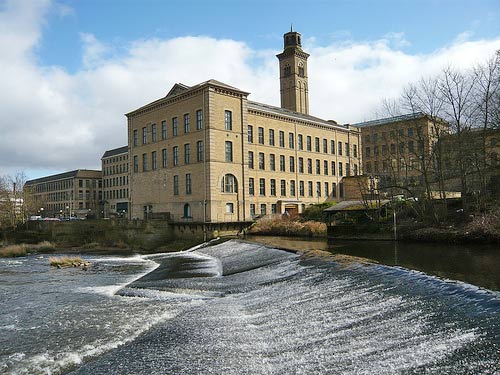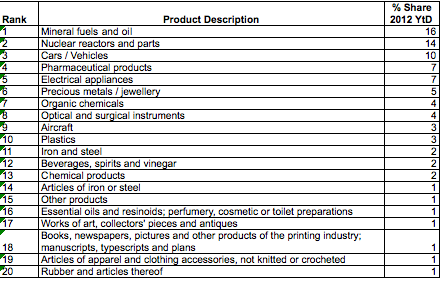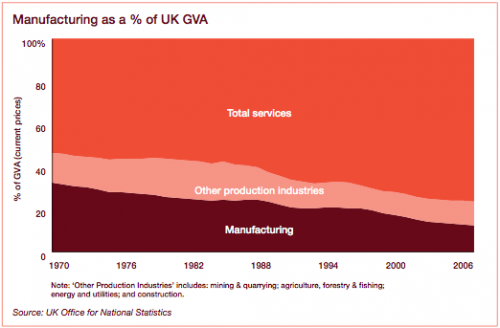The manufacturing sector takes raw materials and converts them into finished products. The manufacturing sector is concerned with using raw materials from the primary sectors, such as iron and coke and the production of finished goods, such as cars. These manufactured goods can then be sold in the tertiary sector.

The manufacturing sector is to take these two raw materials and produce steel, which is then used to manufacture other goods, such as cars and bicycles.
Examples of manufacturing sector
- Small workshops producing pots, artisan production.
- Mills producing textiles,
- Factories producing steel, chemicals, plastic, car.
- Food production such as brewing plants, and food processing.
- Oil refinery.
Economic development and manufacturing
A primitive economy will rely on the primary sector; economic development allows more refinement of raw materials to produce goods and services with greater value added. To manufacture goods requires greater human capital, and also better technology to be able to make use of raw materials and produce a finished good.
Industrial revolution
The UK economy was primarily based on agriculture until the eighteenth century. However, the development of new technologies like the steam engine enabled a rapid industrialisation and the growth of the secondary sector. The economic development encouraged people to leave the land and go and work in the new factories springing up across the UK. The manufacturing sector became the biggest employer and also the biggest component of the UK economy.
Manufacturing sector in the UK
The top goods produced in the UK include – nuclear reactors and the car industry.
Note product ranked one – mineral fuels and oil is concerned with the primary sector, because it is the extraction of oil rather than the manufacture of a finished product.

De-industrialisation
The UK was one of the first countries to undergo industrialisation. It was also one of the first to undergo – deindustrialisation. This is a process where the manufacturing sector becomes a smaller percentage of the overall economy.

See: Relative decline in manufacturing
Advantages of developing manufacturing/industrial sector
- Enables higher incomes. Greater income elasticity of demand for manufacturing
- Diversifies economy away from relying on primary products
- With greater value added, manufacturing enables higher real wages than in agriculture.
- Enables countries to specialise and benefit from economies of scale.
Potential costs of developing manufacturing sector
- Pollution from manufacturing production process
- Work in factories boring and repetitive, workers can become alienated
- Developing economies may lack necessary human capital and have to import workers and machines, which could prove very costly
- Land-locked countries will find it harder to export goods
Related

Those who are the industrial owners must succeed ao that they can expand their businesses and in that manner there’ll be job opportunities
Sometimes, expanding can be dangerous and tiresome for the business. One may undergo financial difficulties and also, if a business grows too large, managers need to be appointed and a manager does not work as devotedly as the owner himself. So… job opportunities is not such a big issue, and you need not make thousands of businesses fail because of petty problems such as miscommunication and laziness. Cheers 🙂